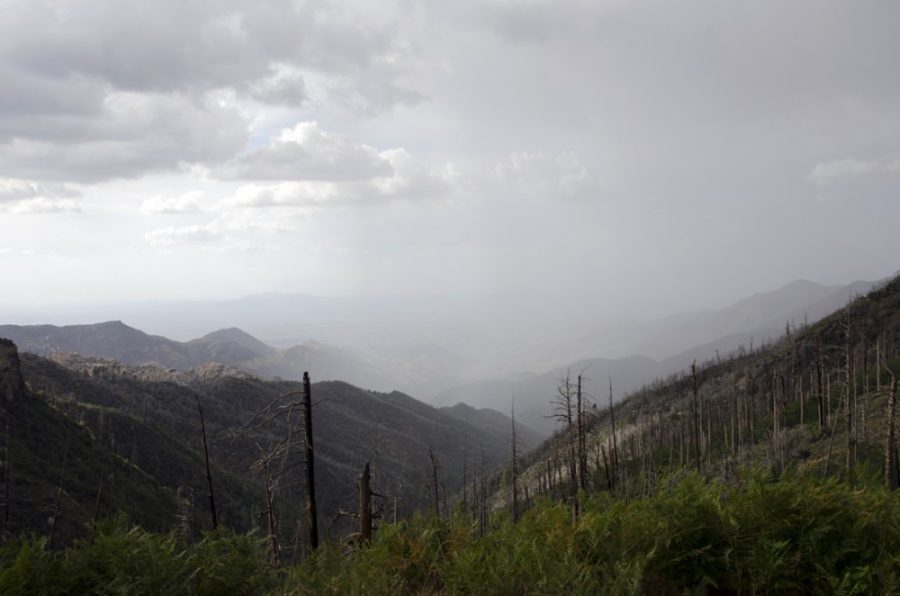UA researchers have found that water from the land is a more important contributor to the North American Monsoon than water from the ocean.
Huancui Hu, a hydrometeorology graduate student, and Francina Dominguez, an assistant professor of atmospheric sciences and hydrology, quantitatively assessed how much water sources, both oceanic and terrestrial, have contributed to the moisture of the NAM over the past 30 years. Their work was published recently in the Journal of Hydrometeorology.
Many researchers have tried to determine the main contributing moisture source to monsoons, which was previously thought to be oceanic, coming from either the Gulf of California or the Gulf of Mexico, Hu said. However, these studies never took an in-depth quantitative approach to address this question, she added.
“Monsoon precipitation is critical for the Northwestern Mexico and the Southwestern U.S.,” Dominguez said. “Both people and ecosystems depend on the intense precipitation that falls during the summer months.”
In particular, the monsoon brings in over half of the annual precipitation to the region, Hu said.
During the monsoon, Hu and Dominguez found that water from land sources contributes to monsoon moisture more than the oceans and does so consistently throughout the season.
“Using isotopic and numerical precipitation data, we show that evapotranspiration from the land is an important source of moisture [for monsoons],” Dominguez said. Evapotranspiration is the combined evaporation of water from soil and transpiration from plants.
As scientists learn more about the NAM, they can further use this knowledge to make predictions about climate change. Dominguez explained that currently, global climate models are not at the point of being able to predict how monsoons will be evolving in the future. So far, scientists can only speculate that the NAM regions will become more arid, Dominguez said.
“The NAM is relatively hard to simulate because there [are] complex terrain conditions in this area, in particular the Sierra Madre Occidental [mountain range],” Hu said. “So we are trying to understand this process from the perspective of water movement and the evaporation-transport-precipitation cycle.”
Although models are important, it is important to back up these simulations with observed data from nature to make sure that they agree, Hu said. The study used both to describe the relationship between the land surface processes and NAM precipitation and can be useful to further forecast precipitation in the Southwestern U.S. and in Northwestern Mexico.
“This research sheds light on the sources of moisture for the monsoon,” Dominguez said. “In the future, we will have to carefully consider evapotranspiration from the land and the importance of vegetation.”
_______________
Follow John McMullen on Twitter.









